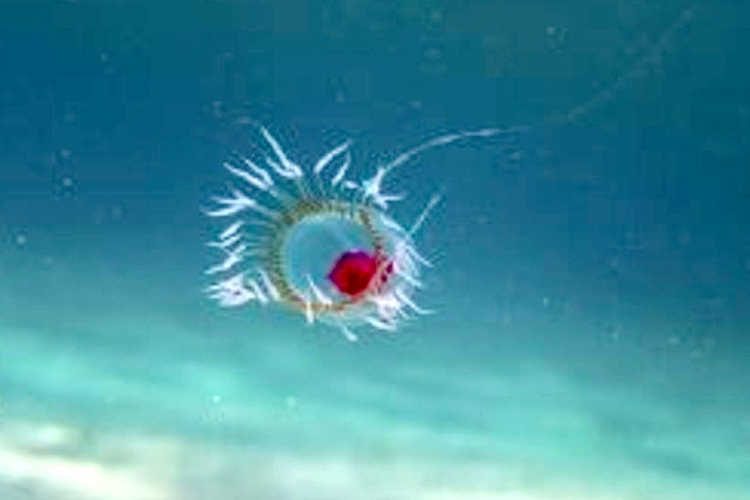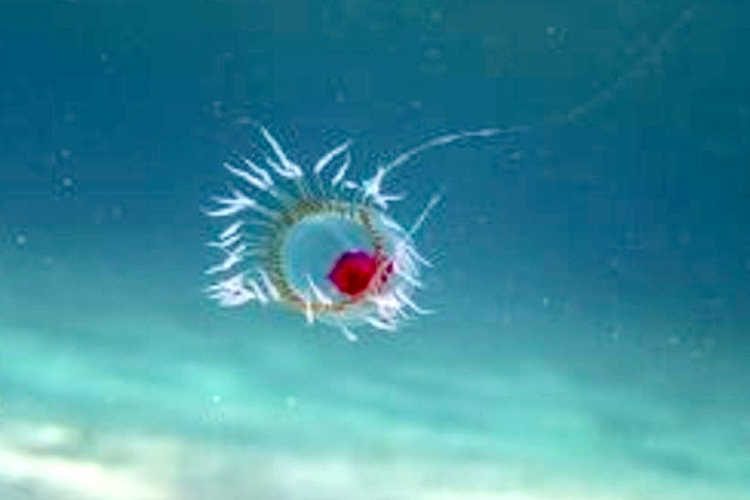Turritopsis dohrnii, a small species of jellyfish native to the Mediterranean, is commonly known as the “immortal jellyfish, and it literally lives up to its name. Possessing the ability to revert to its a sexually immature stage instead of succumbing to an inevitable death, this tiny creature holds the secret to true biological immortality.
Humans have fantasized about immortality since the beginning of time. We have countless myths and stories about it, but until the mid-1990s we had yet to find any proof that eternal life on this earth was possible. In 1996, researchers published a study about a small species of jellyfish capable of reverting from an adult, solitary individual to its juvenile colonial state, thus cheating death and achieving potential immortality. Just as long as it wasn’t consumed by predators and it could be sustained by its environment, the jellyfish could repeat this cycle indefinitely and live forever. To this day, the immortal jellyfish remains the only known immortal animal.

Photo: Bachware/Wikimedia Commons
All known jellyfish exist in two forms: polyp form and medusa form. But while most jellyfish grow from polyp to medusa before ultimately succumbing to the inevitable end of their life cycle, Turritopsis dohrnii possesses the ability to switch between the two stages and cheat death. It does this through a process known as transdifferentiation, which basically involves the transformation of a mature cell into another type of mature cell.
Instead of dying like every other creature, the tiny immortal jellyfish first retracts its tentacles , turning into a blob, and then drops to the ocean floor and reverts to its polyp stage within three days. Scientists found that the new polyp is genetically identical to the original jellyfish, but it’s a juvenile version of it. Think of it as a chicken reverting to an egg, or a moth to a caterpillar.
The immortality of the Turritopsis dohrnii isn’t exactly the kind we humans normally fantasize about, as while the jellyfish technically doesn’t die, it also doesn’t live in the same body as before. Plus, the jellyfish can still die as a result of predation by other marine animals or disease, but its cycle is the closest we’ve ever come to observing immortality in nature.
Interestingly, the immortal jellyfish cannot completely control their reversal from medusa to polyp stage. Research has shown that the transformation only occurs when the jellyfish is injured or starving, or when the temperature or salinity of the water it lives in changes. However, if the conditions are right, it can potentially repeat the cycle indefinitely.
There are three types of Turritopsis jellyfish in the world, the dohrnii, the nutricula and the rubra, but only the first carries the name of “immortal jellyfish”. It’s not that the other two are known not to be capable of the same remarkable transformation, just that dohrnii is the only one whose immortality has been proven in controlled, laboratory conditions.
Sources: Jstor, ABC.net.au













